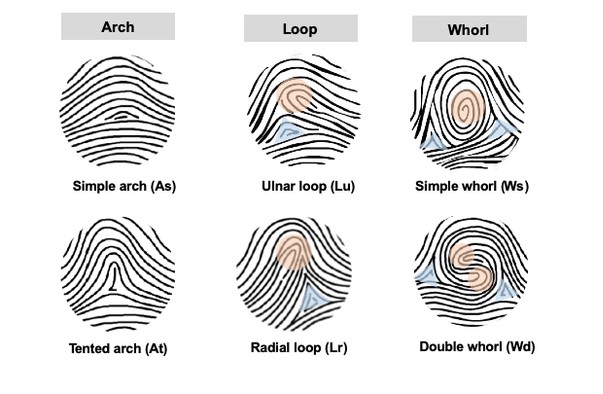Why do identical twins have different fingerprints?
Identical twins, also called monozygotic twins, are often thought to look exactly alike except for their fingerprints. This type of twins forms when a single egg, fertilized by a single sperm, splits into two. Because of this, they share almost the same genes, are always the same gender, and look nearly identical.
Scientists know from previous research that genes play a part in how the complex patterns on our fingertips form. So why don't identical twins have the same fingerprints?
More to read:
Experiments on growing animals in artificial wombs completed successfully
They recently found that three groups of signaling molecules, along with slight differences in finger shape and skin growth timing, create our unique fingerprints. This shows that genetics isn’t everything when it comes to fingerprints. Our DNA doesn't completely control our fate.
In the late 1800s, doctors and scientists started collecting evidence that the ridge patterns on a person's fingers are unique and remain the same throughout life. This made fingerprints useful for identification. Soon, fingerprints were used to catch criminals, and they are still an important forensic tool today. The chance of two people having the same fingerprints by coincidence is less than one in 64 billion. Researchers calculated that it would take over a million years for two people with identical fingerprints to appear by chance in a police database.
Even identical twins, who have the same DNA and look very similar, have slightly different fingerprints. This is because fingerprints are shaped by both genetic and environmental factors during development in the womb.
Fingerprints take shape between 13 and 19 weeks of fetal development. The exact details of the patterns are influenced by factors like umbilical cord length, position in the womb, blood pressure, nutrition, and the rate of finger growth, according to a new study published by a group of researchers from the University of Edinburg in the journal Cell.
More to read:
Chinese researchers cure deafness with genetic treatment
These small differences can become more noticeable after birth due to differences in weight and height, for example. While identical twins have more similar fingerprints than strangers, experts and advanced software can still tell them apart, making it hard for twins to commit crimes undetected.
Fingerprints are not unique to humans. Chimpanzees and gorillas also have unique fingerprints, which likely come from a shared ancestor. Koalas, a more distant relative, have independently evolved fingerprints that look surprisingly like ours. The ridges on fingers help improve grip and feel textures. Finger ridges develop into three main patterns: symmetrical whorls, curved loops, and triangular arches. Scientists have found several genes that influence these patterns, but the exact processes behind ridge formation were unclear.

More to read:
Studies on longevity describe how five species found a pathway to reverse aging
To understand this, Denis Headon, a geneticist at the University of Edinburgh, and his team studied the RNA in human embryonic fingertip cells to see which genes are active during development. They identified three signaling pathways that instruct skin growth on fingertips: WNT, BMP, and EDAR.
WNT and BMP genes are active in alternating stripes of cells, forming the fingerprint's grooves and bumps. EDAR works with WNT in the grooves.
Mice also have simple ridge patterns on their digits. When researchers disrupted these pathways in mice, they found WNT promotes cell growth to create bumps, while BMP suppresses growth to form grooves. EDAR affects ridge size and spacing. For example, without WNT, no ridges form; without BMP, ridges are wider. Mice with a mutation that silenced EDAR had a polka dot ridge pattern instead of stripes.
More to read:
New drug may help re-grow teeth, literally
These pathways work together to form the primary ridges that become fingerprints. The overall fingerprint pattern - whorl, loop, or arch - depends on the finger's shape and the timing of ridge formation. Ridges start to form in up to three places on the fetal finger: the center of the raised pad, the fingertip under the nail, and the joint crease.
Ridges spread out from these points like waves, the researchers learned. Large, symmetrical pads tend to produce whorls, while longer, asymmetrical pads produce loops. If ridges don't form on the pad or form late, ridges from the crease and nail meet to create an arch.
More to read:
New study claims pig blood compound sets rats’ biological clock to move backwards
The Edinburg team also found that WNT, BMP, and EDAR signals also help cells develop into hair follicles. However, fingertips stay hair-free because follicle formation stops early on the palms. This suggests that different skin structures, like hair, glands, and fingerprints, all start from the same early developmental path but then specialize for more specific tasks and roles.
Just like fingerprints, identical twins don't share the same iris swirls and patterns, so each of their irises is also unique.
***
NewsCafe relies in its reporting on research papers that need to be cracked down to average understanding. Some even need to be paid for. Help us pay for science reports to get more interesting stories. Use PayPal: office[at]rudeana.com or paypal.me/newscafeeu.







